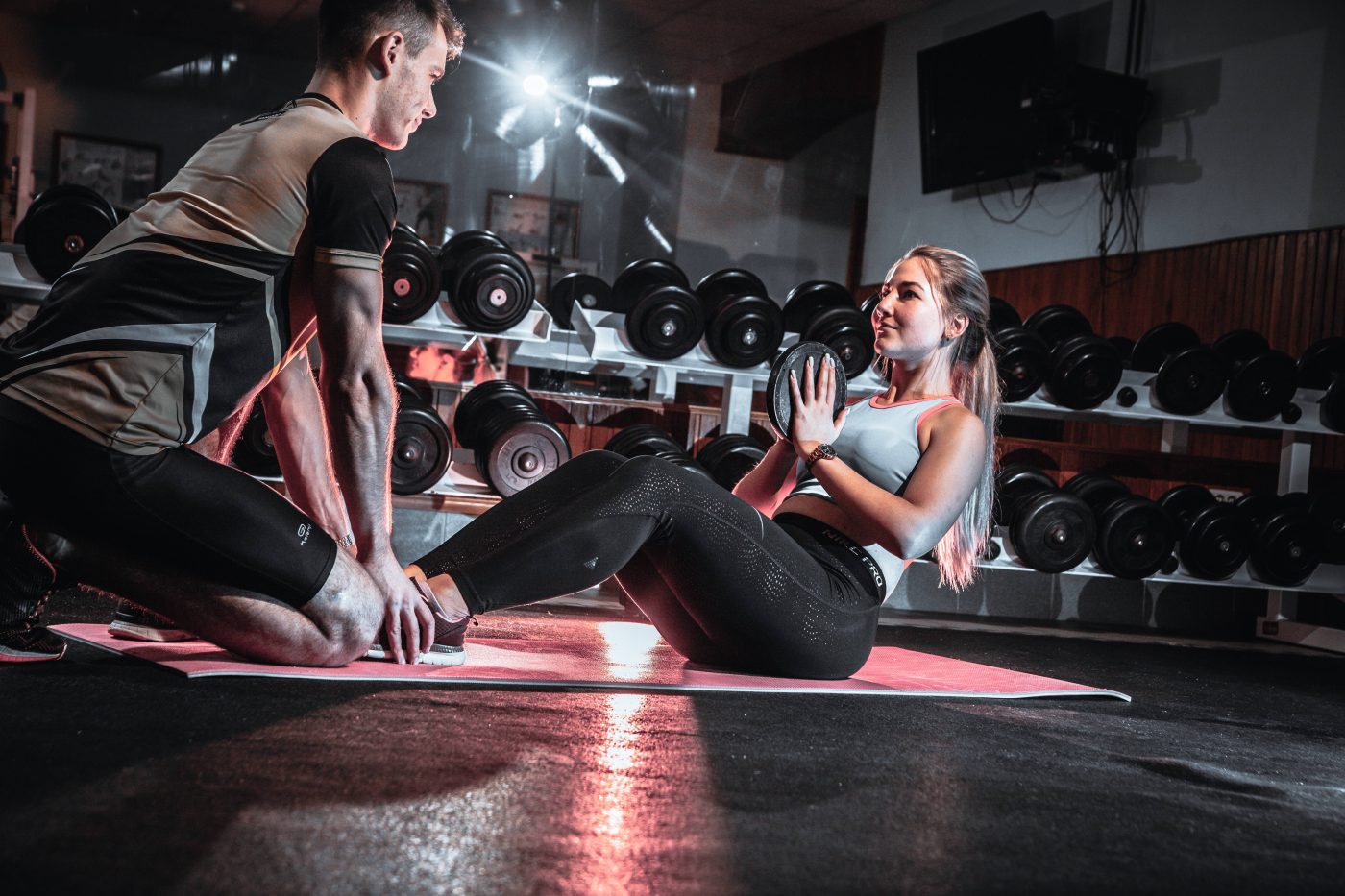

Winters can be cold, wet, and harsh. Going for a bike ride outdoors initially means spending half an hour just getting dressed warmly. And afterwards, you often have to allocate quite some time to get your equipment sparkling clean again. Therefore, winter is the time when many road cyclists head to the gym. But what’s the best way to ensure you’re in top shape come spring for a race or a cycling tour? ProCycling Women explores spinning and strength training.
Spinning
Imagine a cozy warm spinning room, which even needs air conditioning to keep it bearable, an enthusiastic spinning instructor, and comfortably pedaling away the hours in shorts and a sleeveless shirt on a bike. It’s an attractive image, so it’s not surprising that many cyclists prefer spinning in winter over an outdoor ride in the cold or solo sessions on the Tacx or home trainer. Since spinning keeps you within the same sport, many cyclists find it appealing to do during the winter. It means not having to adapt to a new movement, as would be the case if you decide to take up skating or swimming in winter.
However, spinning can easily become very intense, and that’s something to be cautious about. If you’ve been racing a lot from March to September, participating in gran fondos or cycling tours, then spending the remaining months of the year at high intensity in a spinning room can be taxing on your body. Especially if you attend several spinning classes in a row. An hour per week at a high heart rate might not be too harmful. Cyclists who compete in a cross race once a week during winter are also exerting themselves at high intensity for an hour each week. But if you decide to replace a long-duration training with two or even three consecutive spinning classes each week, then you need to be careful.
Fortunately, in spinning, you can decide how hard you push yourself. When cycling outdoors with a group, you have to keep up with them (or cycle alone once the group goes too fast) – on a spinning bike, you can set the resistance yourself and thus determine the intensity of your training. It then all comes down to your discipline in terms of how much you let the instructor influence you, and whether you set your own limits. And how you react if the instructor thinks you’re not training hard enough and comes to tighten your flywheel. That’s obviously not acceptable, but unfortunately, some instructors do that. So, just turn it back or send the instructor away before they have a chance to touch your knob.
Elite cyclist Wendy Venge uses spinning in winter to get into shape. She also taught classes for a while but stopped when she started racing more seriously. Therefore, she knows what it’s like to be in a spinning room as both a cyclist and an instructor. “I always told people before my class to keep an eye on their own pace and intensity. Everyone is different. There are differences in age, experience with spinning, and everyone has different goals. So they should decide for themselves how deep they want to go. Then, of course, I put on some nice music and try to motivate the people as much as possible, but that’s part of spinning.”
Strength Training
While spinning focuses more on cardiovascular training, strength training is particularly good for muscle building. More and more research shows that strength training, as a supplement to well-trained cyclists, has a real added value in performance. And while you might immediately think of the gym’s weight room, where hunks with (too) big muscles use all the weights, you can also do strength training on the bike. So, if you’re dealing with a mild winter, you can do certain intensive exercises on the bike alongside road endurance training, which have the same effect as strength training in the gym. The sidebar lists specific exercises that are useful.
If you dare to venture among the (mostly) men in the weight room, it often turns out not to be as scary as you think, and it can be a pleasant change of pace. A workout in a dry, warm environment with nice background music. The sidebar also includes several exercises for strength training in the gym.
All Ages
Not only young people benefit from strength training. Older individuals can significantly benefit from the effects of strength training. Your fitness decreases, best measured by maximum oxygen uptake. Generally, this starts decreasing from the age of 30, by about 10% per decade. From the age of 60, this decline is even about 20% per decade. From this age, maximum strength also decreases, but you can prevent this by doing strength training at least once, preferably twice a week.
Adrie van Diemen, founder of Webtrainer.com, is a strong advocate of strength training and regularly posts articles about it on his website. He shows a study on his website that demonstrates strength training is just as effective in older individuals as in younger ones. The only thing to be careful about as you get older is that, for example, joints are weaker, and you’re therefore more prone to injuries if you don’t perform the exercises correctly.
In short, all the more reason to visit the gym and start weight training. Of course, we advise you to consult a doctor first if you have back problems or other doubts before starting intense strength training.
Strength Exercises for Cyclists
Strength training as a supplement to cycling has been proven effective. You can do these exercises throughout the year, but you can also choose to perform intensive strength training only during the off-season (i.e., in winter if you race on the road and in summer if you race on the track or in cyclo-cross). You can perform this training on the bike or in the gym. Here are some exercises.
Strength Training on the Bike
Strength exercises on the bike are most effective when you ride a gear heavy enough that you have to exert maximum effort at 45 to 60 revolutions per minute. Do this effort in blocks of 30 seconds to a minute, fully recovering between blocks by pedaling as many revolutions as possible on the lightest possible gear.
For example, you can find a viaduct or hill nearby. Ride up with a gear that allows you to reach maximum effort at 45-60 revolutions per minute. At the top, ride a leisurely loop, turn around, and recover the last part of the way back down. There, turn around to ride back up at full power. Repeat this exercise, for example, five times, with three to five minutes of rest in between.
Strength Training in the Weight Room
Not every exercise is equally suitable for cyclists. Some exercises can even be somewhat counterproductive. So, if you really want to start intensive strength training, first ask at the gym or a trainer what’s best for you. The squat, step-up, leg pull, and leg press are the most effective exercises and thus most suitable for cyclists.
Always first ensure you perform the exercise technically correctly without weights. Then start with a low weight and only increase it once you can easily manage that weight. In general, cyclists are better off doing more repetitions with a lower weight than just a few repetitions with a lot of weight. However, occasionally breaking your regular routine is useful to ‘wake up’ your body a bit, but as a cyclist, you don’t want to gain too much (muscle) weight. You can prevent this by doing many repetitions with a lower weight.
Squat
Make sure you bend deeply, but always keep the knee behind the toes. The exercise is most effective when performed quickly, especially the movement back up should be short and powerful.
3 sets of 25 repetitions.
Step Up
Choose a step that comes up to just below your knees. Put one foot on it and push yourself up from your heel.
3 sets of 20 repetitions (per leg), eventually increase to 30 repetitions.
Leg Pull
Adrie van Diemen advises no more than 15 repetitions in this exercise to prevent cramps. You also need a special shoe for this exercise (e.g., an old cycling shoe with a hook) or a special band to put around your foot.
3 sets of 15 repetitions (per leg).
Leg Press
Always do the leg press last, as it’s the least stressful on your back. So if you’re tired at the end of the workout, the leg press is still safe to do. Perform the exercise with one leg for added difficulty.
3 sets of 30 repetitions.
You can alternate these leg exercises with exercises for core and back stability